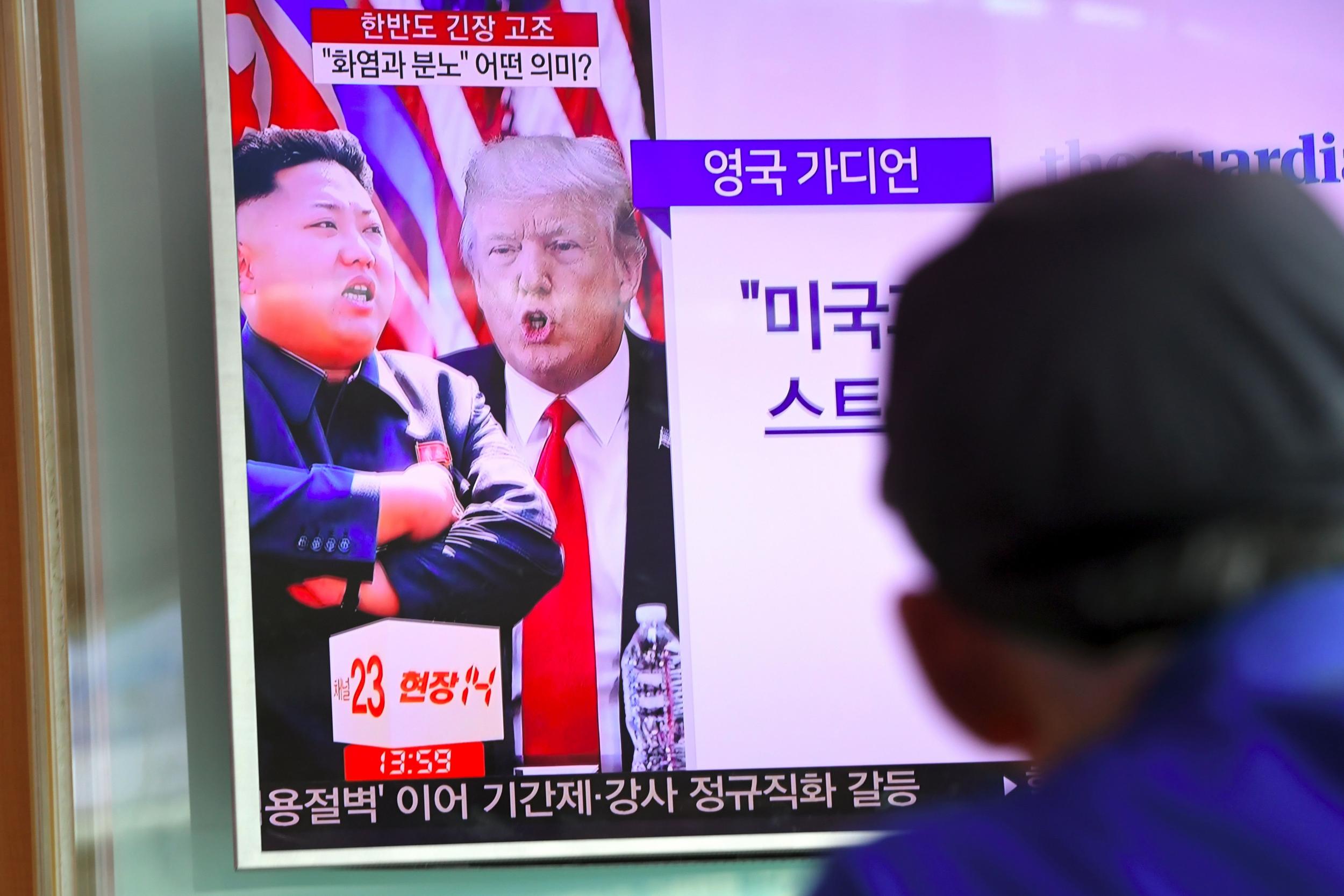Clinton came the closest to solving the North Korea problem – with Trump, we face a very different future
At least the bombing of Hiroshima and Nagasaki brought a terrible war to an end. Should a nuclear warhead be deployed by or against North Korea, it would start a conflict of hideous proportions


I spent the first 10 years of my life under the shadow of the Cold War between East and West. Not that I knew about it, what with being more interested in, by turns, learning to walk, playing with my toys and getting obsessed with football. The first I really knew about the Cold War were the events in 1990-91 that brought it to an end. But it was only in my mid-teens that I started to understand quite how much it had dominated people’s hopes and fears for decade after decade.
It had done so for the obvious reason that the Cold War had been accompanied by the lingering threat of global nuclear conflict. And Britain, as America’s closest ally in Europe, was plainly in the Soviet Union’s sights. In the event of an attack, the UK population would have been given the infamous “four-minute warning” and told to take cover immediately – for all the good it would have done.
In the last quarter of a century, the possibility of atomic weapons being used in anger has diminished. True, we have had warnings about the potential use by terrorists of a “dirty bomb” – which is hardly something to be sniffed at. Yet the chances of all-out nuclear conflict of the sort the world imagined during the Cuban missile crisis or any of the other moments when the Cold War heated up have declined. Or at least, so we thought.
North Korea has been a fly in the international community’s ointment for nearly seven decades. It was a proxy for the Soviet Union in the Fifties, a Chinese puppet in the Sixties and Seventies and – since the Nineties – has taunted the rest of the world by developing ever more sophisticated weapons systems. Identified by George W Bush in 2002 as part of his “axis of evil”, North Korea saw what happened to the other members of the “axis” (Iraq – destroyed; Iran – neutered) and decided that the best defence against perceived American aggression was to get a nuclear bomb as quickly as possible.

While the world was watching Iraq, Afghanistan, Syria – the list goes on – Pyongyang was busy testing missiles and expanding its nuclear programme. And now, seemingly all of a sudden, we find ourselves discussing the serious possibility of a nuclear conflagration. The rhetoric from Kim Jong-un is now backed up by the ability to bung a miniaturised hydrogen bomb on an intercontinental missile. Meanwhile, the White House is run by a man who is said to wonder what the point is of having nuclear weapons if you do not use them.
Quite how people in Seoul – just 35 miles from the border with the North – can sleep at night is a mystery. Perhaps they have grown used to their nightmare neighbour; convinced themselves that Kim’s fiery pronouncements are just bluster designed to garner respect but unlikely to be backed by military action.
Such sanguinity may be admirable but is it a product of sound judgement or merely a consequence of the fact that most people in South Korea have no memories of the Korean War, let alone the global conflict which ended five years earlier? Perhaps it results from the simple realisation that they have no control over Kim Jong-un’s decision-making – nor over President Trump’s, for that matter. I’m not certain I would be very calm in the circumstances.
Trump, of course, points to the failed attempts of his predecessors to resolve the Pyongyang puzzle, ignoring the obvious point that it is an almost insoluble problem. Bill Clinton maybe came closest – although Trump would presumably regard the Agreed Framework (under which North Korea would downsize its nuclear programme in return for a slow normalisation of relations) as a classic tool of the “appeasement” he now decries.

Yet can the man who authored The Art of the Deal find a way to do business with Kim Jong-un that does not involve the death of hundreds of thousands of people? At the moment, there is little to indicate that he has any particularly brilliant ideas which do not involve pressing a big red button – obviously the worst idea of all.
Indeed, this is the real crux of the present problem. For years North Korea sought to develop nuclear weapons – and long-range missiles – in the fairly sure knowledge that no US President (or anyone else) was really willing to launch an attack on Pyongyang and thus risk wider war on the Korean peninsula. With Trump, nobody can be certain about anything. His meddling with the US Department of Energy also indicates a certain willingness to play fast and loose with nuclear technology – a deeply troubling prospect.
In 1945, not a million miles from Pyongyang, the United States Army Air Force dropped two nuclear bombs on Japan. They killed somewhere in the region of 200,000 people. It is difficult, 70-odd years on, to quite comprehend that kind of destruction. But we should try to imagine it; so should Kim Jong-un and so should Donald Trump, because that may be the best way for them to convince themselves that there should never be a repeat.
At least the bombing of Hiroshima and Nagasaki brought a terrible war to an end. Should a nuclear warhead be deployed by or against North Korea, it would start a conflict of hideous proportions. Shouldn’t that scare us all?
Join our commenting forum
Join thought-provoking conversations, follow other Independent readers and see their replies
Comments
Bookmark popover
Removed from bookmarks